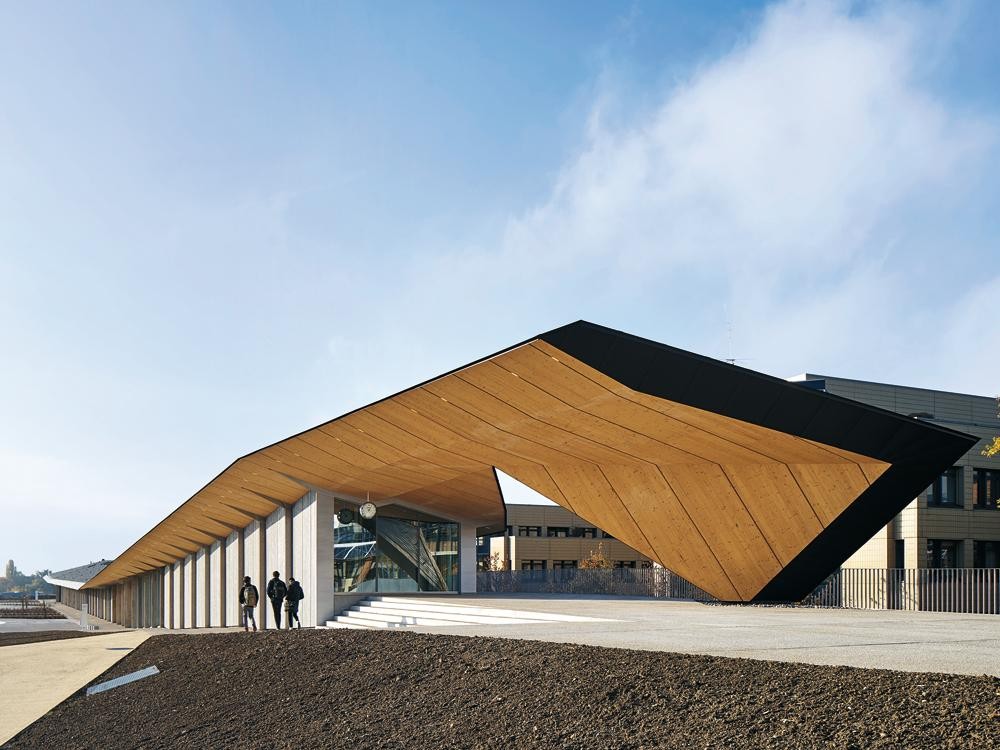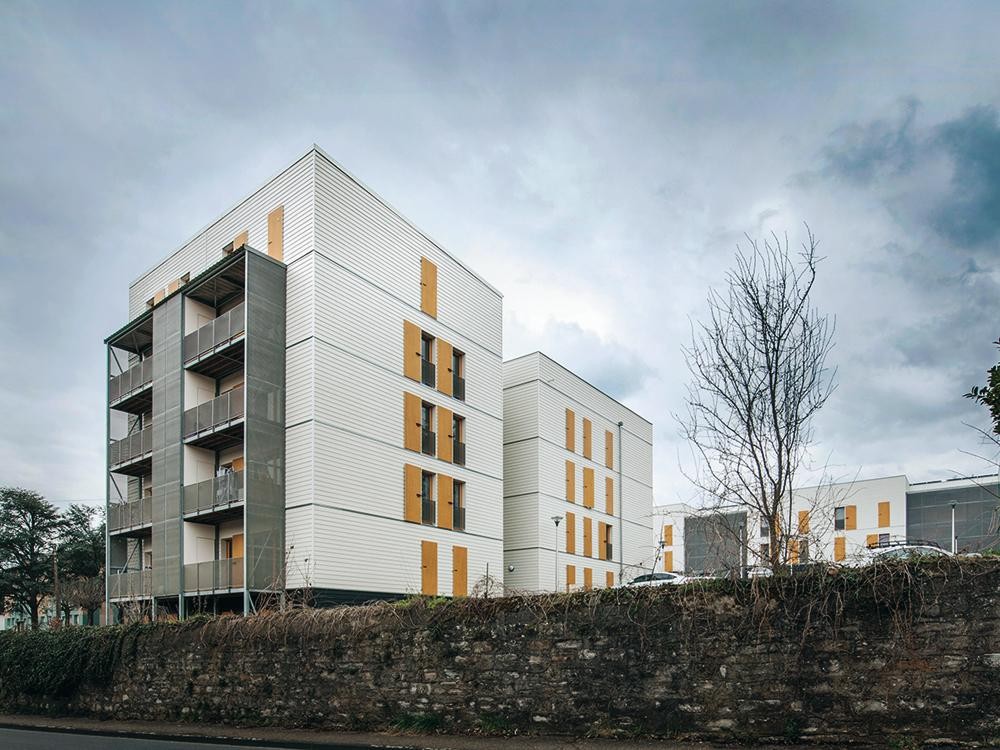
© Claudius Pfeifer
The centre of the Mannheim district of Schönau is a product of the urban planning principles of the 1950s: large, green spaces divide the four to five-floor residential buildings from the streets. They give the quarter a relatively anonymous, but in no way run down character. In recent years, many of the buildings have been renovated. In order to improve their energy efficiency, external thermal insulation composite systems were used on most of the houses. As the owner of the apartment building located in Lilienthalstrasse the Mannheim Gemeinnützige Baugesellschaft (GBG or Non-profit Building Association) pursued a different strategy. The building, which was originally constructed in 1957 and is centrally located in the neighbourhood, is not only intended to be visually prominent in its surroundings, but is also intended to attract somewhat more affluent tenants who can afford to pay the slightly higher rents.
The Housing Association commissioned two Darmstadt university professors, Günter Pfeifer and Annette Rudolph-Cleff to design the scheme. The two architects recommended that the building not simply be insulated, but that the function also be altered, so that comfort and energy efficiency benefit equally. The change of function began with changing the apartment floor plans: before the renovation the building had four two-room apartments per floor, which were efficiently accessed by a stairway on the northern side. However, at only 45-square metres each, these apartments were far too small by today’s standards.
The Housing Association commissioned two Darmstadt university professors, Günter Pfeifer and Annette Rudolph-Cleff to design the scheme. The two architects recommended that the building not simply be insulated, but that the function also be altered, so that comfort and energy efficiency benefit equally. The change of function began with changing the apartment floor plans: before the renovation the building had four two-room apartments per floor, which were efficiently accessed by a stairway on the northern side. However, at only 45-square metres each, these apartments were far too small by today’s standards.
















